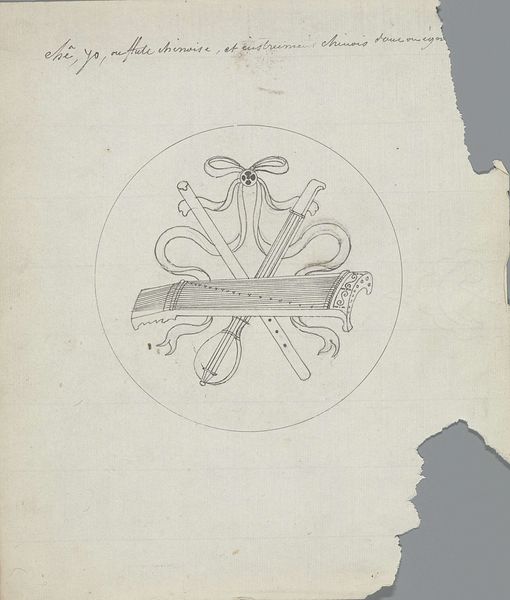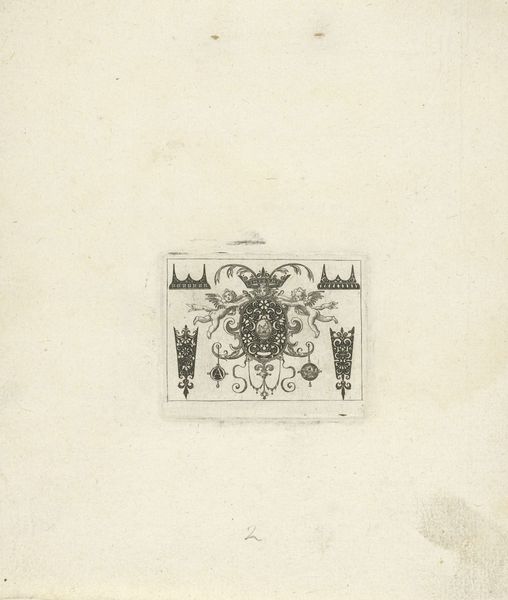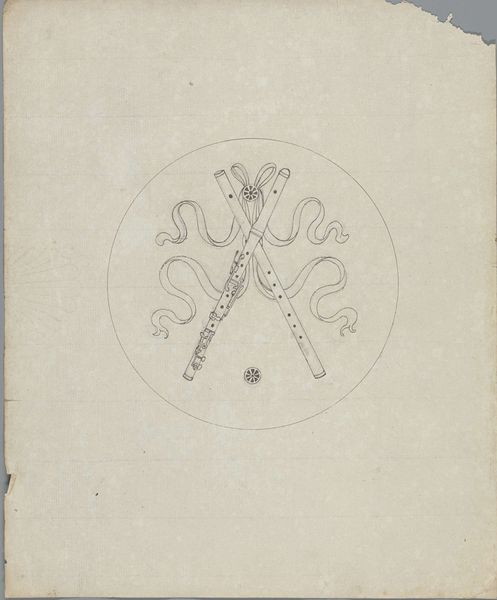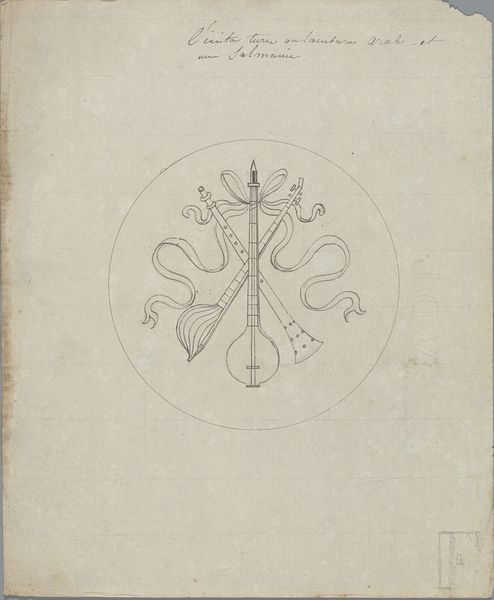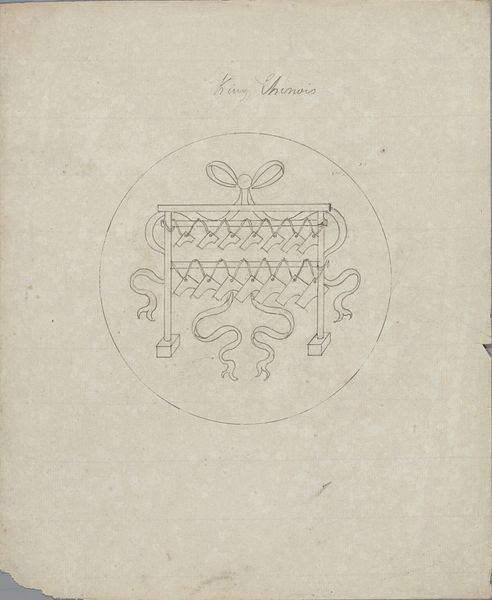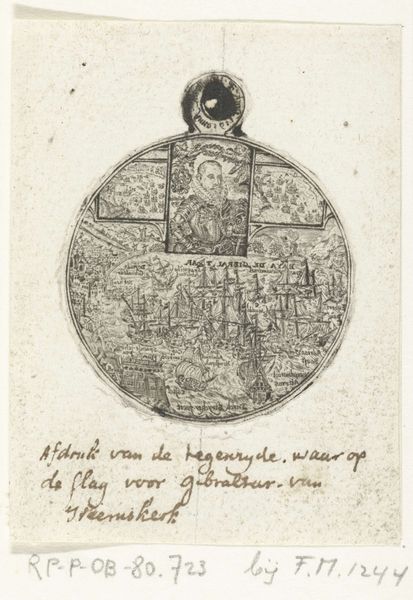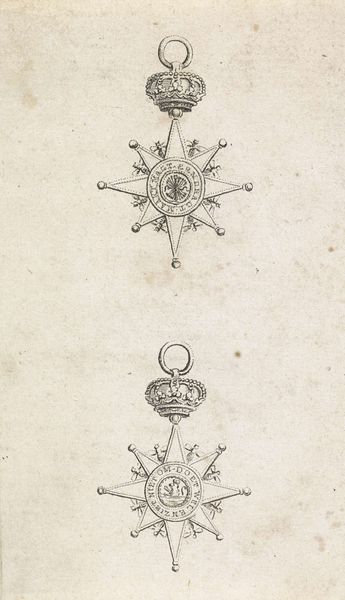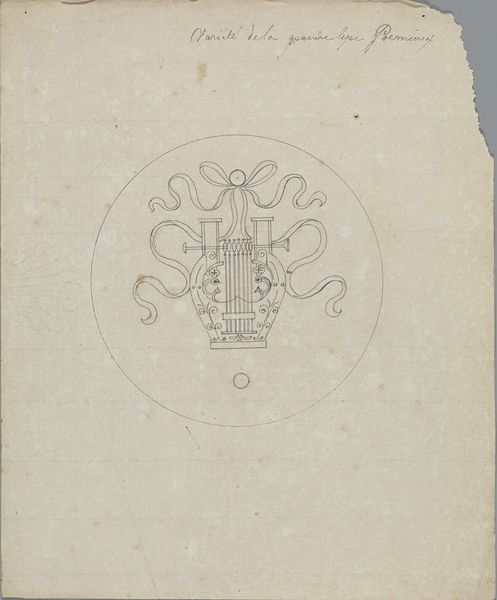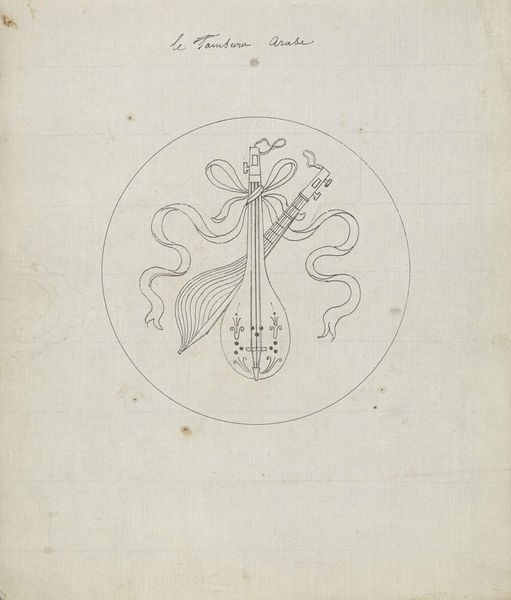
Afdruk van de voorzijde van een gegraveerde penning met het portret en de dood van Jacob van Heemskerck 1611
0:00
0:00
drawing, print, ink, engraving
#
portrait
#
drawing
#
baroque
#
dutch-golden-age
# print
#
figuration
#
ink
#
history-painting
#
engraving
Dimensions: height 59 mm, width 48 mm
Copyright: Rijks Museum: Open Domain
Curator: Good morning, everyone. I would like to draw your attention to a 1611 print by Dirck Strijcker titled, "Afdruk van de voorzijde van een gegraveerde penning met het portret en de dood van Jacob van Heemskerck" here at the Rijksmuseum. It commemorates the life and death of the famed Dutch admiral. Editor: My initial impression is dominated by the medium itself; the intricate lines of the engraving lend a striking formality to the tragic subject. I find the composition meticulously arranged and quite restrained. Curator: Indeed. The portrait at the center anchors the piece. Framed above a dynamic naval battle, this artistic choice constructs an overt parallel between the Admiral’s individual heroism and his broader historical significance. Notice how Strijcker uses linear precision to carve the contours of both Heemskerck's face and the ships' sails? Editor: That speaks volumes. This level of detailed execution requires considerable time and skill, reflecting the high value placed on commemoration and perhaps the sponsor’s deep pockets. I'm also drawn to the material object represented here—a coin or pendant? The implications of using currency or personal adornment as a historical document are profound; suggesting it was created for widespread distribution, to solidify Heemskerck's legacy within the popular consciousness. Curator: The interplay between the graphic precision and symbolic weight of the imagery effectively elevates this modest print beyond mere historical record, entering a space of idealized representation. It strikes me how he condenses time and space, encapsulating both the admiral's likeness and his heroic demise onto one small, but potent surface. Editor: Considering the geopolitical context of the Dutch Golden Age, maritime dominance equated to power. Reproducing and circulating this image through print transforms this battle scene into both propaganda and lasting tribute. One sees clearly how early modern art was directly enmeshed with crafting national identity, linking a single hero’s image to larger themes of trade, territorial claims and Dutch colonial ambitions. Curator: Absolutely. It offers an exemplary encapsulation of baroque ideals through both portraiture and action! The layering of these artistic choices creates an intricate, unified image that captures and immortalizes its subject through masterful technical skill. Editor: I walk away considering the hands and technologies needed to conceive of, manufacture and circulate the print as a form of collective historical record for an emerging national identity during an early modern time.
Comments
No comments
Be the first to comment and join the conversation on the ultimate creative platform.



